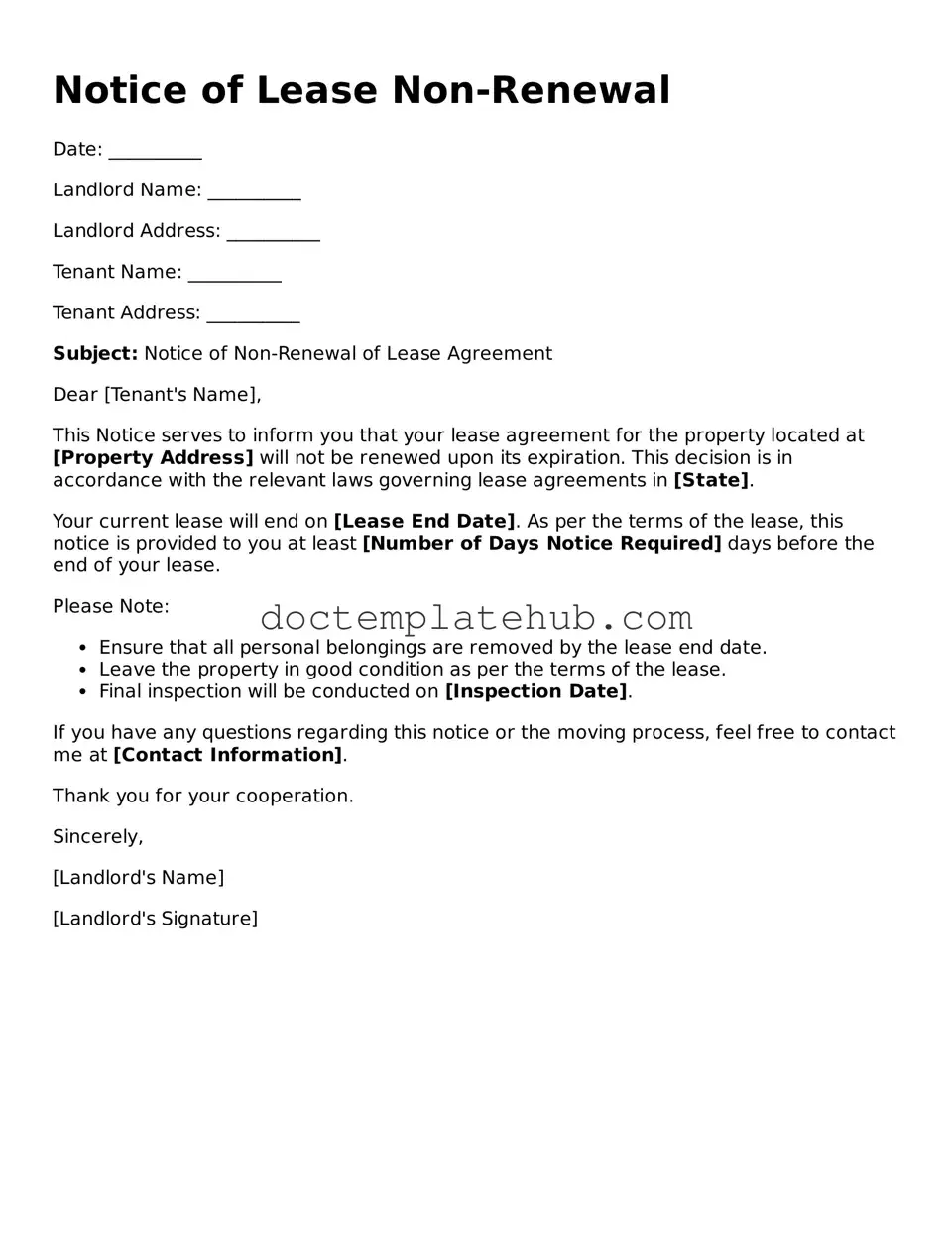The Notice of Termination of Lease is similar to the Notice of Lease Non-Renewal form in that both documents serve to inform tenants about the end of a rental agreement. While the Notice of Lease Non-Renewal specifically indicates that the lease will not be renewed at the end of its term, the Notice of Termination can be used to end a lease before its expiration. Both documents must be delivered in accordance with state laws and usually require a specific notice period.
The Eviction Notice also shares similarities with the Notice of Lease Non-Renewal. Both documents are formal notifications regarding a tenant's status. However, an Eviction Notice is typically issued due to a breach of lease terms, such as non-payment of rent, while the Notice of Lease Non-Renewal is used when the landlord chooses not to continue the lease for other reasons. Both documents require clear communication and adherence to legal guidelines.
The Rent Increase Notice can be compared to the Notice of Lease Non-Renewal in that both documents communicate important changes regarding the rental agreement. A Rent Increase Notice informs tenants of a change in rental rates, while the Notice of Lease Non-Renewal indicates that the lease will not continue. Both require timely delivery to allow tenants to make informed decisions about their housing situation.
The Notice of Intent to Vacate is another document that resembles the Notice of Lease Non-Renewal. This notice is typically submitted by tenants to inform landlords of their decision to leave the rental property. Similar to the Notice of Lease Non-Renewal, it outlines the tenant's intention and provides a timeline for vacating the premises. Both documents facilitate communication between landlords and tenants regarding the end of a lease.
The Lease Renewal Agreement is closely related to the Notice of Lease Non-Renewal, as it represents the opposite action. While the Notice of Lease Non-Renewal indicates that the lease will not be extended, a Lease Renewal Agreement formalizes the continuation of the rental terms. Both documents require careful consideration of the terms and conditions set forth in the original lease.
The Lease Assignment Notice also bears similarities to the Notice of Lease Non-Renewal. This document is used when a tenant wishes to transfer their lease obligations to another party. While the Notice of Lease Non-Renewal communicates the end of a lease, the Lease Assignment Notice allows for the lease to continue under new management. Both documents require proper notification and adherence to lease provisions.
The Sublease Agreement is another document that can be compared to the Notice of Lease Non-Renewal. A Sublease Agreement allows a tenant to rent out their space to another person, effectively creating a new tenant-landlord relationship. In contrast, the Notice of Lease Non-Renewal indicates the termination of the original lease. Both documents must be executed in compliance with the original lease terms.
The Security Deposit Return Notice is similar in that it deals with the conclusion of a tenancy. This notice is issued when a landlord returns the security deposit to the tenant at the end of the lease. While the Notice of Lease Non-Renewal indicates that the lease will not continue, the Security Deposit Return Notice finalizes the financial aspects of the tenancy. Both documents are crucial for ensuring that all parties are informed and that their rights are respected.
To further understand the complexities of rental agreements, tenants and landlords can benefit from various resources, including the Florida Lease Agreement form, which is crucial for defining the legal framework of their relationship. For additional insights and templates, you can explore TopTemplates.info, which offers comprehensive information on lease agreements tailored for Florida.
Lastly, the Move-Out Checklist can be associated with the Notice of Lease Non-Renewal. The checklist serves as a guide for tenants preparing to leave the property, ensuring that they meet all obligations before moving out. In contrast, the Notice of Lease Non-Renewal simply indicates that the lease will not be extended. Both documents aim to facilitate a smooth transition for both landlords and tenants at the end of a lease term.
